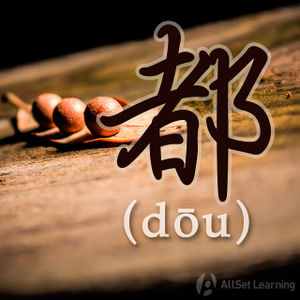Difference between revisions of "Expressing "every" with "mei""
Yangrenjun (talk | contribs) |
|||
| Line 2: | Line 2: | ||
== Structure == | == Structure == | ||
| − | The pronoun 每 (měi) covers the meanings of "each" and "every". | + | The pronoun 每 (měi) covers the meanings of "each" and "every". It is often used with "都" in a complete sentence. |
<div class="jiegou"> | <div class="jiegou"> | ||
| − | 每 + Measure word + Noun | + | 每 + Measure word + Noun + 都 |
</div> | </div> | ||
| Line 15: | Line 15: | ||
* <em>每</em> 个 人 | * <em>每</em> 个 人 | ||
| − | * <em>每</em> | + | * <em>每</em> 次 |
| − | * <em>每</em> 瓶 啤酒 我 都 喝 光 了。 | + | * <em>每</em> 瓶 啤酒 我 <strong>都</strong> 喝 光 了。 |
| + | * <em>每</em> 个 国家 我 <strong>都</strong> 去 过。 | ||
| + | * 我 <em>每</em> 天 <strong>都</strong> 不 吃 早饭。 | ||
</div> | </div> | ||
Revision as of 03:07, 31 August 2012
-
Level
-
Similar to
-
Used for
-
Keywords
Structure
The pronoun 每 (měi) covers the meanings of "each" and "every". It is often used with "都" in a complete sentence.
每 + Measure word + Noun + 都
Examples
- 每 个 人
- 每 次
- 每 瓶 啤酒 我 都 喝 光 了。
- 每 个 国家 我 都 去 过。
- 我 每 天 都 不 吃 早饭。



